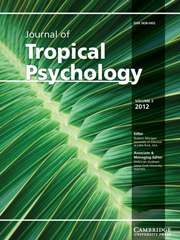Article contents
Reliability and validity of the Statistical Anxiety Scale among students in Singapore and Australia
Published online by Cambridge University Press: 12 November 2014
Abstract
Given the negative relationships between statistics anxiety and statistics achievement, it is important for researchers and instructors to have a reliable and valid measure to identify students with statistics anxiety. The purpose of the current study was to examine the psychometric properties of Vigil-Colet, Lorenzo-Seva, and Condon's (2008) Statistical Anxiety Scale (SAS) among students in Singapore and Australia. Unlike the commonly used Statistical Anxiety Rating Scale, the SAS provides a specific measure of statistics anxiety. Participants were 197 undergraduates (79.2% female) in the James Cook University Psychology programs at the Singaporean (70.1%) and Australian (29.9 %) campuses. Acceptable internal consistency reliabilities, ranging from 0.88 to 0.95 for the three factors of the SAS, were found in the current study. Confirmatory factor analysis suggested that a modified three-factor model best describe the data. Scores on the SAS shared positive correlations with another measure of statistics anxiety, and negative correlations with a measure of attitudes toward statistics. The results provided support for the use of the SAS among Singaporean and Australian psychology undergraduates.
- Type
- Articles
- Information
- Copyright
- Copyright © The Author(s) 2014
References
- 3
- Cited by


